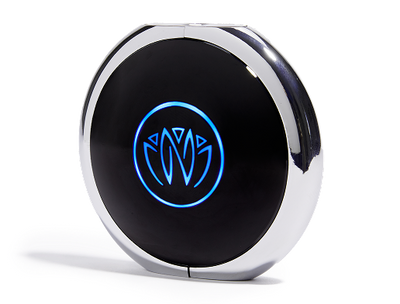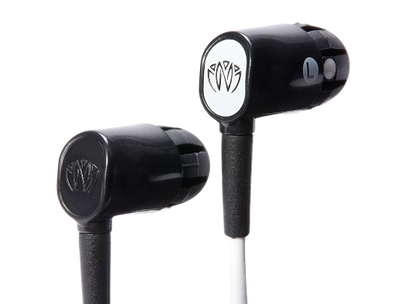Welcome to the exciting world of vagus nerve stimulation! Although we talk about all kinds of different methods for stimulating the vagus nerve, today's focus is on sound simulation. We'll tell you how to try vagus nerve sound stimulation at home, how Xen by Neuvana can help, and plenty of other things you've always wanted to know about this magical nerve.
What is the Vagus Nerve?
Speaking of this magical nerve, let's begin by discussing the vagus nerve and how it works. The vagus nerve is part of the body's autonomic nervous system, specifically responsible for controlling involuntary body functions like heart rate, digestion, breathing, and more. It also plays a significant role in regulating mood and emotions.
As the longest of the cranial nerves, it extends from the brainstem to the abdomen, connecting many vital organs along the way. Because of the path it follows and the systems it influences, vagus nerve stimulation has been used for years to help treat conditions such as epilepsy, depression, and anxiety. However, it can also be used to improve overall well-being and health. As a result, it's becoming a more mainstream approach as more people realize how accessible this treatment is.
How to Stimulate Your Vagus Nerve
Luckily, there are many different ways to stimulate the vagus nerve. We'll discuss vagus nerve sound stimulation in greater detail in a moment. But first, let's talk about some other notable methods, beginning with transcutaneous vagus nerve stimulation (tVNS).
Transcutaneous vagus nerve stimulation
This type of VNS involves directly applying electrical stimulation to the skin at specific points over the neck or in the ear. It's a non-invasive way to stimulate the vagus nerve and can be done in a doctor's office with special equipment, or you can purchase a vagus nerve stimulation device like Xen for home use.
When you use a device like Xen, you wear the vagus nerve-stimulating headphones the same way you would wear standard headphones. Your Xen headphones connect to a handheld device that syncs with the Neuvana app. Then, you can control the intensity and duration of your VNS sessions. You can also choose the songs and sounds you listen to make your session even more relaxing and enjoyable.
Cold exposure
Another VNS method increasing in popularity is cold exposure. There are many different ways to explore this method, but cold water immersion is one of the most common.
As this article from Ice Barrel explains:
"Cold water immersion (CWI) has been in use for centuries and also does not require electrical stimulation. As for the effects, whole-body, CWI stimulates the vagus nerve in body parts like the neck, chest, and back and all the various organs influenced by the parasympathetic nervous system. Numerous studies indicate that routine cold exposure increases parasympathetic activity and lowers the sympathetic "fight or flight" response through the vagus nerve. Practitioners of CWI report improved feelings of well-being and fewer incidents of disease and illness including headaches and back pain."
If you're interested in trying this therapy for yourself, many resources are available online to help you do so. A great place to start is Wim Hof's website.
Chanting, humming, and gargling
Chanting, humming, and gargling each creates vibrations in the throat and neck that can target the vagus nerve. In doing so, it helps tone and stimulate the vagus nerve.
This report from the University of Ottawa elaborates:
"The vagus nerve is connected to your vocal cords and the muscles at the back of your throat. Singing, humming, chanting and gargling can activate these muscles and stimulate your vagus nerve. And this has been shown to increase heart-rate variability and vagal tone."
Deep, slow belly breathing
Something as simple as taking slow, intentional, and deep breaths can also have a powerful effect on the vagus nerve. This type of breathing activates the parasympathetic nervous system and can help reduce feelings of stress and anxiety.
It works, in part, by stimulating the vagus nerve and sending signals to the brain to slow down your heart rate. This is why deep breathing is often recommended as a relaxation technique in yoga classes or meditation practices. Focusing on your breath also helps focus your attention on something other than what is stressing you.
To try this technique, begin by sitting comfortably in a chair or lying flat and closing your eyes. Then, take slow, deep breaths through your nose and ensure the air reaches all the way down to your belly. Notice how it feels when you breathe out and focus on that sensation as you exhale.
Using Sound for Vagus Nerve Stimulation
Now, it's time to talk about vagus nerve sound stimulation. More specifically, how does music affect the vagus nerve?
Music Health explains:
"The vagus nerve is in close proximity to the ear, through which we hear sound and music. When we listen to music, the vibrations of the sound resonate in the eardrums before traveling through the vagus nerve. Since the vagus nerve is associated with important physical functions like heart rate, taste, swallowing, and digestion, it's closely related to the "rest and digest" PNS. When the vagus nerve is activated, it stimulates the PNS and sends a signal that it's time to relax.
They also explain that the right music can target the vagus nerve more effectively. This means it's important to choose songs or sounds that feel calming or relaxing, rather than those that wind you up. That way, you can get your vagus nerve to elicit the "rest and digest" response and transport you to a more soothing place.
So, when you're using your Xen by Neuvana headphones to stimulate the vagus nerve, you have the added benefit of listening to sounds or songs that further the relaxation response.
Learn about Xen
Let's talk a little more about Xen by Neuvana to help you understand how accessible and non-invasive this VNS device truly is.
Xen provides a safe and non-invasive VNS experience so you can begin your wellness journey immediately, without waiting for a doctor appointment or clinic. And the best part is that this device is easy to use – just slip on the headphones, select your sound therapy program, and relax!
As you work with Xen by Neuvana's VNS device, remember that caring for yourself and your mental health should always be a priority. VNS can be an important tool in your wellness journey, but it's just one piece of the puzzle.
Take the time to focus on self-care and practice healthy habits like eating nutritious foods, exercising regularly, getting enough sleep, and making time for activities that bring joy into your life. Vagus nerve sound stimulation can help you reach new levels of relaxation and stress relief, but when paired with other healthy habits, VNS will work its magic and reap all of its benefits.
Benefits of Stimulating Your Vagus Nerve
Vagus nerve stimulation can be an effective adjunct to your current health and wellness routine, helping you feel more relaxed, balanced, and connected with your body.
It can provide several benefits that many people are eager to incorporate into their lives.
Here are some examples of the reported effects:
- Improved digestive health
- Better absorption of nutrients
- Reduced anxiety, stress, and depression
- More balanced moods
- Improved sleep quality
- Increased immune function
- Improved mental clarity and focus
- Better control of heart rate and blood pressure
Vagus nerve stimulation can be a great way to boost your overall health and well-being naturally. With the right tools and techniques, you can use sound or other therapies to stimulate the vagus nerve from your home. And with Xen by Neuvana headphones, it's easier than ever!





